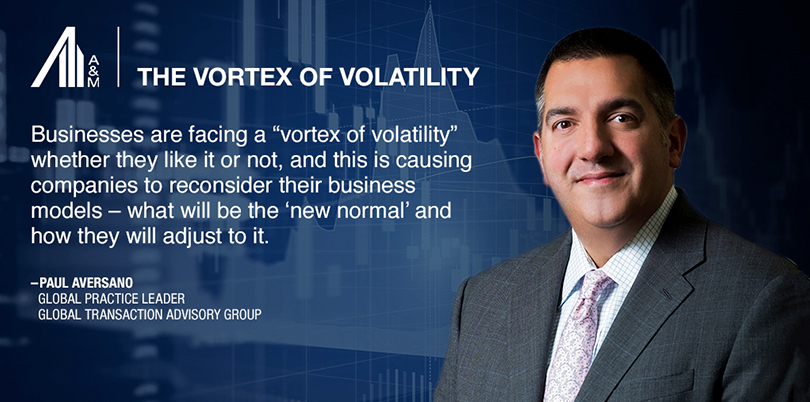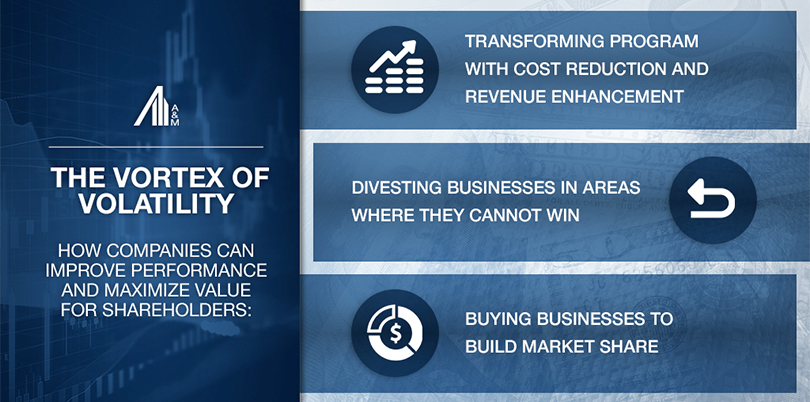Publish Date
Jul 16, 2018
Region: North America
Businesses must get fit for the future in the face of a ‘vortex of volatility’
Any one of the following would be enough to frighten the horses: technological change that threatens the existence of blue chip companies and potentially entire industries; confrontation over trade with the U.S.; geopolitical tension with Iran, North Korea and the Middle East; and looming interest rate rises.
Only right now, companies are dealing with them all simultaneously. And the weaknesses in their business models are being exposed for all to see.
“I’ve never seen an environment, globally, in which there are more variables impacting businesses and public equity markets,” says Paul Aversano, leader of Alvarez & Marsal’s (A&M’s) Global Transaction Advisory Group. “Swings of 100 to 200 points in the US Dow Jones Industrial Average used to be an anomaly, now the market can be up or down several hundred points in a day and no one bats an eye.

“Businesses are facing a “vortex of volatility” whether they like it or not, and this is causing companies to reconsider their business models — what will the ‘new normal’ be and how do they adjust to it?”
Aversano says companies must now ensure their operating model and cost structure are as lean as possible, and that the company is fit for the future. Activist shareholders are looking for companies that don’t start the work.
In the first week of July 2018 alone, Daniel Loeb’s hedge fund Third Point publicly criticized Nestle, the world’s biggest food and drink company, for being too slow to respond to the “unprecedentedly rapid pace” of change in the consumer goods industry, and the CEO of European industrial conglomerate ThyssenKrupp resigned in the wake of criticism over shareholder returns from activist investors at Elliott and Cevian Capital.
“Companies may think it’s more prudent to wait, but they have to do something now because stakeholders will force them to,” says Aversano. “You would rather be the one effecting the change, not waiting to have your hand forced.”
There are three main ways companies can improve performance and maximize value for shareholders:
1. Through a transformation program with cost reduction and revenue enhancement measures to help the organization keep pace with the ‘new normal’;
2. By divesting businesses in areas where they cannot win; or
3. By buying businesses to build market share.

A successful transformation program may naturally lead to a sale of divisions or the business as a whole, by increasing the value of the enterprise, says Aversano. In a recent client project, A&M’s corporate transformation team was engaged, and successfully reduced costs by over $20 million, resulting in the business subsequently being put up for sale in order to capitalize on this new value creation.
“Without the transformation work, they would not have looked to sell: it created the value that was used to complete the transaction, maximizing value for shareholders,” says Aversano.
A further significant cause of volatility is on the horizon: an economic slowdown, which will only accelerate the forces already at work,” says Aversano.
“This is all happening in the strongest economy we’ve seen in a while: as soon as the economy starts to pull back, shares prices come down and interest rates go up, we’ll see some real hiccups,” he continues. “Some people refuse to admit their world has changed — but our view would be, you can deal with this now, or deal with it later in a much worse situation.”
Source: https://www.alvarezandmarsal.com/insights/vortex-volatility